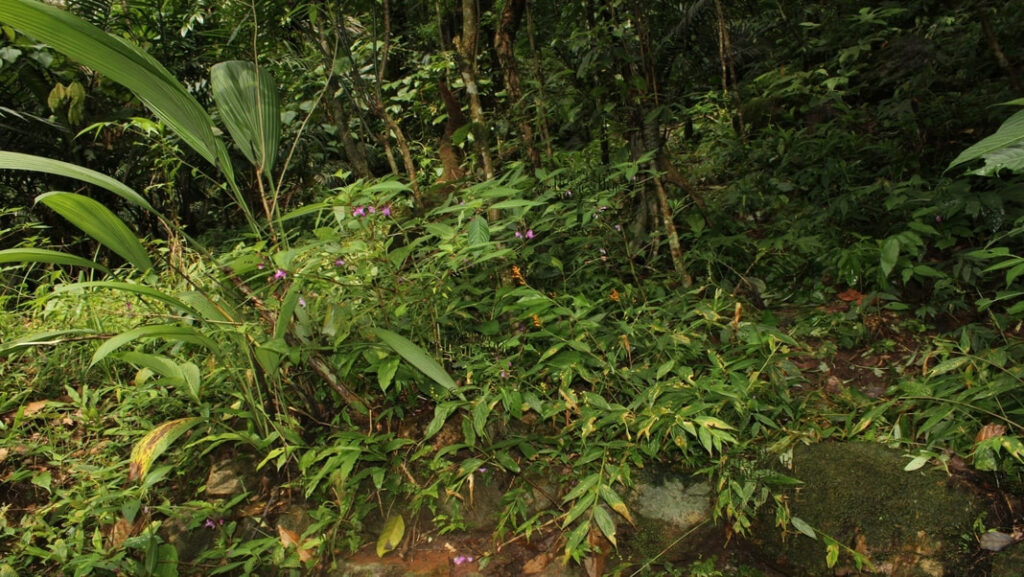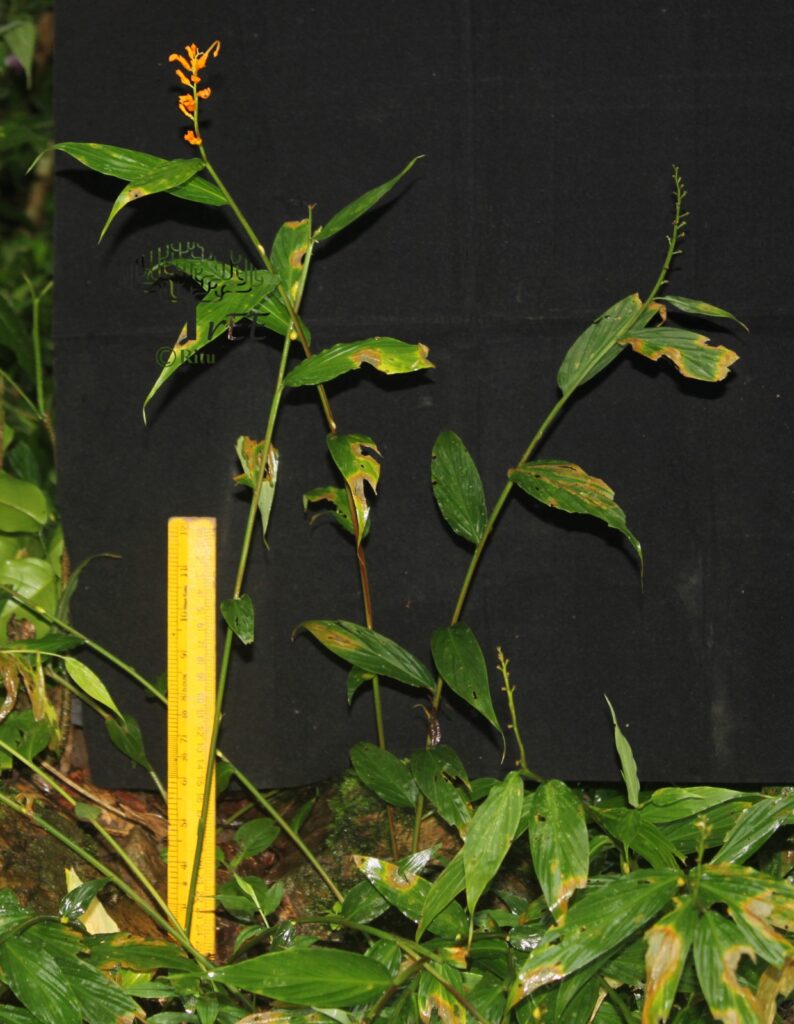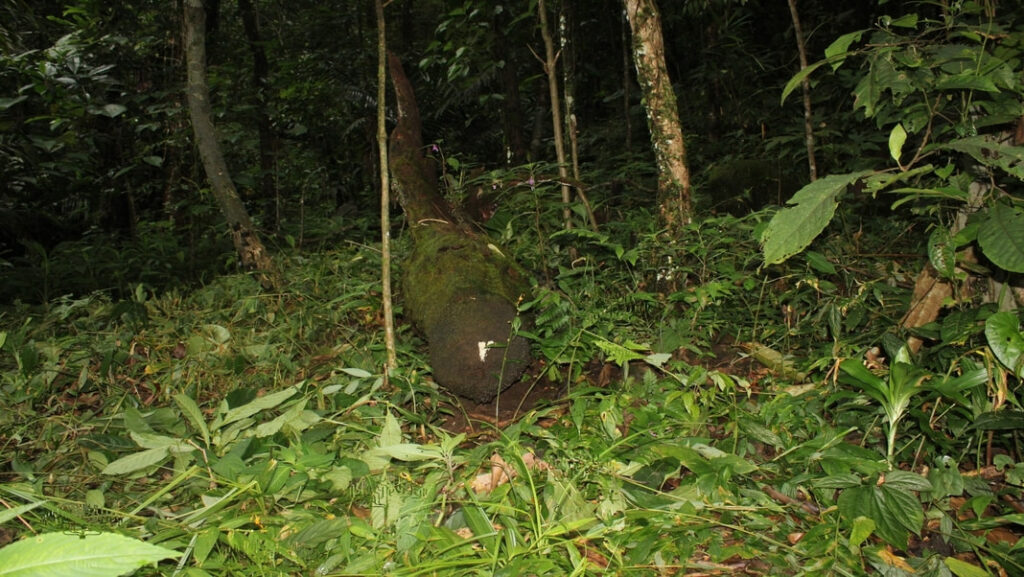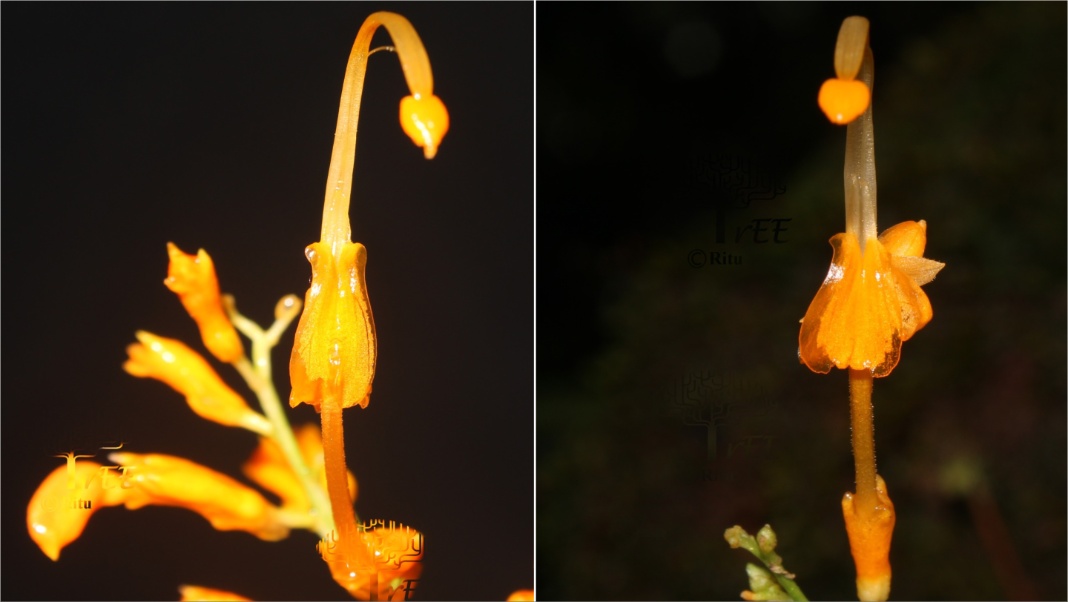Guwahati, Sep 6: By the way, they are not girls, but two new ginger species discovered from the Meghalaya’s Double decker Living Root Bridge Area.
They are called ” dancing girls” due to their unique appearance of flowers that look like ballerinas with bowed heads and outstretched arms that appear to “dance” in the wind and have charmed botanists for centuries.
Two researchers from Indian Institute of Science Education and Research Bhopal- Vinita Gowda and Ritu Yadav who were on fieldwork in Meghalaya the monsoon months of August and September 2022, discovered two new Globba L. species- Globba tyrnaensis and Globba janakiae in the East Khasi Hills district of the state.
Globba is a genus of flowering plants in the ginger family (Zingiberaceae), which is notable for its small, ornamental plants with delicate flowers. These plants are commonly found in tropical regions, particularly in Southeast Asia, India, and the Eastern Himalayas. Globba species are often referred to by names like “dancing girls” due to their intricate, colorful flowers that appear to “dance” in the wind.

Globba tyrnaensis was discovered in the famed Double Decker Living Root Bridge area of Tyrna village in Cherrapunji (Sohra), East Khasi Hills, at an elevation of about 731 meters. A smaller population was also found near Thangkharang Park in Cherrapunji.
This species is morphologically similar to Globba orixensis and Globba macroclada but is distinguished by its short inflorescence. The flowers of Globba tyrnaensis are orange, with a short filament and large anther. It produces bulbils, which are present throughout the inflorescence, helping the plant propagate.
The species gets its name from Tyrna village in Cherrapunji from where it was found.

The species is terrestrial, growing in the shaded understory of forests. The region’s unique climate and high rainfall create the perfect moist environment for Globba tyrnaensis to thrive. The species is visited by bees, indicating its role in the local ecosystem.
Currently, Globba tyrnaensis is known from only two populations in Meghalaya, each spanning around 400 square meters. Given the limited population and habitat, the species has been informally assessed as endangered under the International Union for Conservation of Nature (IUCN) guidelines. The species faces threats from habitat disturbance, and further conservation efforts are needed to protect it from extinction.

The second species- Globba janakiae was also found in the Double Decker Living Root Bridge area of Tyrna village, Cherrapunji. The species shares its habitat with Globba tyrnaensis but has a smaller known population, with only a few individuals observed.

Morphologically similar to Globba orixensis and Globba macroclada, Globba janakiae differs in its shorter inflorescence and the absence of inflorescence bracts. The flowers are orange, and the species has heart-shaped labellum structures with small horn-like appendages (cornicula), which give it a distinct appearance. Like Globba tyrnaensis, it also produces bulbils.
The species is named in honor of Dr. E. K. Janaki Ammal, a pioneering Indian woman botanist who challenged the norms of caste, gender and race. She was critical about deforestation carried out to make way for development projects and advocated preservation of native plants.
Globba janakiae has been informally assessed as critically endangered, with fewer than 10 mature individuals recorded in the wild. The species is extremely vulnerable due to its restricted distribution and the ongoing risks posed by habitat destruction.
Also Watch
Find latest news from every corner of Northeast India at hubnetwork.in, your online source for breaking news, video coverage.
Also, Follow us on-
Twitter-twitter.com/nemediahub
Youtube channel- www.youtube.com/@NortheastMediaHub2020
Instagram- www.instagram.com/ne_media_hub
Download our app from playstore – Northeast Media Hub





